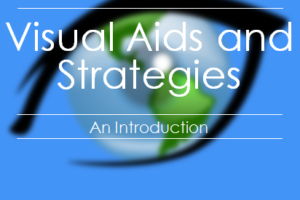
Dr. Alois Alzheimer first identified the disease in 1906. He described the two hallmarks of the disease: “plaques,” which are numerous tiny, dense deposits scattered throughout the brain that become toxic to brain cells at excessive levels, and “tangles,” which interfere with vital processes, eventually choking off the living cells. When brain cells degenerate and die, the brain markedly shrinks in some regions. –Alzheimer Society CanadaI am text block.
Alzheimer’s, a disease of the brain, is the most common form of dementia affecting 64% of Canadian dementia patients. It’s not a normal part of aging. Alzheimer’s disease affects different parts of the brain, changing abilities and behaviours. It affects an individual’s judgment, reasoning, memory, language abilities and moods making performing daily activities difficult. Previously it was believed that once an ability was lost that it could not be recovered, however new research suggests that some relearning is possible.
The Alzheimer Society of Canada reports “1 in 20 Canadians over age 65, and 1 in 4 of those over age 85 are affected by Alzheimer’s disease” and “twice as many women get Alzheimer’s disease than men.” Though Alzheimer’s usually affects an individual over 65 years, current research suggests signs may appear as early as in an individual’s 40’s. Research has shown that the length of this disease is between 7-10 years, though it can be longer.

There is currently no known cause for Alzheimer’s, however, research has found aging, health, and genetics to be risk factors related to the disease. Medications are available to treat some of the symptoms related to Alzheimer’s though they do not stop the progression of the disease. It affects individuals uniquely following certain stages of change. The duration and order in which these stages occur varies and can progress slowly, subtly or be overlapping.
WHAT IS THE DIFFERENCE BETWEEN ALZHEIMER’S AND TYPICAL
AGE-RELATED CHANGES?
| SIGNS OF ALZHEIMER’S/DEMENTIA | TYPICAL AGE-RELATED CHANGES |
| 1) Poor judgment and decision-making | 1) Making a bad decision once in a while |
| 2) Inability to manage a budget | 2) Missing a monthly payment |
| 3) Losing track of the date or the season | 3) Losing things from time to time |
| 4) Difficulty having a conversation | 4) Sometimes forgetting which word to use |
| 5) Misplacing things and being unable to retrace steps to find them | 5) Forgetting which day it is and remember it later |

HAVE YOU NOTICED ANY OF THESE WARNING SIGNS?
1.) Memory loss that disrupts daily life.
What’s a typical age-related change?
Sometimes forgetting names or appointments, but remembering them later.
2.) Challenges in planning or solving problems.
What’s a typical age-related change?
Making occasional errors when balancing a check book.
3.) Difficulty completing familiar tasks at home, at work or at leisure.
What’s a typical age-related change?
Occasionally needing help to use the settings on a microwave or to record a television show.
4.) Confusion with time or place.
What’s a typical age-related change?
Getting confused about the day of the week but figuring it out later.
5.) Trouble understanding visual images and spatial relationships.
What’s a typical age-related change?
Vision changes related to cataracts.
6.) New problems with words in speaking or writing.
What’s a typical age-related change?
Sometimes having trouble finding the right word.
7.) Misplacing things and losing the ability to retrace steps.
What’s a typical age-related change?
Misplacing things from time to time and retracing steps to find them.
8.) Decreased or poor judgment.
What’s a typical age-related change?
Making a bad decision once in a while.
9.) Withdrawal from work or social activities.
What’s a typical age-related change?
Sometimes feeling weary of work, family and social obligations.
10.) Changes in mood and personality.
What’s a typical age-related change?
Developing very specific ways of doing things and becoming irritable when a routine is disrupted.

WHAT TO DO IF YOU NOTICE THESE SIGNS
If you notice any of the 10 Warning Signs of Alzheimer’s in yourself or someone you know, don’t ignore them. Schedule an appointment with your doctor.
With early detection, you can get the maximum benefit from available treatments. You can explore treatments that may provide some relief of symptoms and help you maintain a level of independence longer. You may also increase your chances of participating in clinical drug trials that help advance research.
Supporting an individual with Alzheimer’s disease involves assisting them with their declining memory and developing behaviours which may appear from the use of medications and/or their acceptance of a new life situation. The use of visual supports and strategies can support an individual struggling with a gradual loss of memory, language ability, moods, and behaviours improving their functional independence and overall quality of life.
RELATED LINKS:
Join The Conversation
Are you supporting an individual or loved one with Alzheimer’s? What is your greatest challenge? Leave me a comment here, and join the conversation on Facebook where I asked, “The challenge I have supporting an individual with Alzheimer’s is_____________.”

Workshop Presentation - Visual Aids and Strategies for Healthcare Professionals/Frontline Workers
Contact Vizually Speaking today to learn how Visual Aids and Strategies for Healthcare Professionals/Frontline Workers can decrease the undesired behaviour(s), improve communication, promote independence and increase self-confidence. Through our dynamic presentation you will:
✓ Uncover the importance of using Visual Aids and Strategies.
✓ Discover the benefits of Visual Aids and Strategies.
✓ Learn how to overcome communication barriers.
✓ Promote independence and decrease undesired behaviours.
✓ Be introduced to NEW resources.
EVERYONE benefits from Visual Aids!




